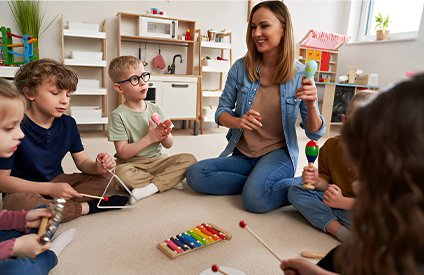What is Cerebral Palsy in Children?
Cerebral Palsy (CP) is a neurological condition that affects a child’s movement, muscle tone, and posture. It is caused by damage to the developing brain, either before, during, or shortly after birth. CP is one of the most common physical disabilities in childhood.
Each child with CP is unique — while some may walk independently with mild stiffness, others may require a wheelchair and more intensive support.
What Causes Cerebral Palsy?
Cerebral Palsy is caused by abnormal brain development or damage to the brain during early development. This can happen due to:
- Birth complications (lack of oxygen during delivery)
- Infections during pregnancy (like rubella or cytomegalovirus)
- Premature birth or low birth weight
- Head injury in infancy
- Genetic mutations affecting brain development
It’s important to note that CP is not progressive — the brain injury doesn’t worsen over time, though the symptoms can change as the child grows.
Common Signs of Cerebral Palsy in Children
The signs of CP vary depending on the type and severity, but early symptoms may include:
Infants:
- Delayed motor milestones (not rolling over, sitting, or crawling on time)
- Stiff or floppy muscles
- Poor head control
- Favoring one side of the body
Toddlers & Older Children:
- Trouble walking or frequent falls
- Muscle stiffness or uncontrolled movements
- Difficulty with coordination and balance
- Speech delays or feeding difficulties
Early intervention is key — parents should consult a pediatrician if any developmental delays are noticed.
Types of Cerebral Palsy
- Spastic CP (most common): Stiff, tight muscles and difficulty with movement.
- Dyskinetic CP: Involuntary, uncontrolled movements (twisting, writhing).
- Ataxic CP: Poor balance and coordination.
- Mixed CP: Combination of the above types.
Each child may show different symptoms and degrees of physical and cognitive impact.
How is CP Diagnosed?
Diagnosis is typically made based on:
- Developmental history and milestone tracking
- Physical and neurological exams
- Brain imaging (MRI or CT scan)
- Screening for reflexes, tone, posture, and movement
Pediatricians may refer families to neurologists, physiotherapists, or developmental specialists for confirmation and treatment planning.
Treatment & Therapy for Cerebral Palsy
While there is no cure for CP, early and ongoing therapies can significantly improve function, independence, and quality of life.
Physiotherapy
Improves strength, flexibility, and mobility. Focuses on walking, sitting, and balance.
Occupational Therapy
Helps with daily tasks like dressing, feeding, and writing. Supports independence.
Speech & Language Therapy
Enhances communication, swallowing, and social interaction.
Orthotics & Mobility Aids
Braces, walkers, or wheelchairs for better posture and movement.
Medications or Surgery
May be used for severe muscle tightness, seizures, or orthopedic correction.
Assistive Technology
Communication devices, adapted toys, and learning tools for better participation.
Can Cerebral Palsy Be Prevented?
Not all cases of CP can be prevented, but risks can be reduced by:
- Regular prenatal care
- Managing maternal infections
- Preventing premature birth
- Ensuring safe birth practices
Genetic counseling may also be recommended in some cases.
Living with Cerebral Palsy
Children with CP can *thrive with the right support. Many go on to attend school, play sports, and lead fulfilling lives. Success comes from a *team approach — involving parents, doctors, therapists, and educators working together.
Encouragement, access to resources, and celebrating small wins play a big role in a child’s confidence and development.
How We Can Help
At *PHYSIO+, we provide *multidisciplinary care for children with Cerebral Palsy — from early diagnosis to customized therapy plans. Our mission is to help every child reach their full potential with compassion and clinical expertise.
Every Step Counts
Cerebral Palsy may affect how a child moves, but it doesn’t define who they are. With love, patience, and the right interventions, kids with CP can move mountains — one small step at a time.

